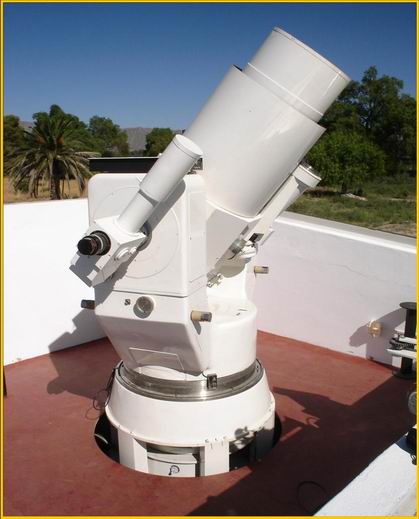Applied Astrometry Research Group
The main contents of the group are about observations and researches of astrometry, they are about:
(1) Observations and researches of SLR in the cooperation between NAOC and Universidad Nacional de San Juan (UNSJ) of Argentina. Under supports of MOSTs of China and Argentina, CAS and NAOC, the astronomical cooperation between NAOC and UNSJ was developed from the beginning of 1990’s since the weather in San Juan is excellent for astronomical observation. The cooperation was extended to the SLR field in the end of 1990’s. A SLR with 60cm-diameter telescope was made in China and the observational room was set up by UNSJ. The SLR was moved to the Observatorio Astronomico "Felix Aguilar" (OAFA) of UNSJ in the end of 2005 and it started to observe satellites and provide data to ILRS in the end of Feb., 2006. According to the observational reports of ILRS, the Sino-Argentine SLR system ranks the second worldwide in the pass total of observing satellites in 2008. ILRS pointed out the quantity and quality of data (of the SLR station) will make it one of the fundamental sites for the ITRF. The cooperative San Juan SLR station is a very important participant in tracking of the LAGEOS satellites as well as other important satellite missions such as Envisat, GRACE, CHAMP, ERS-2, Jason-1, and GFO-1, all with active Earth sensing instruments on board that require precision orbit determination for interpretation of their data. SLR is one of the fundamental instruments that provide this determination for these missions.

60cm-diameter SLR of China at OAFA of UNSJ for the collaboration between NAOC of CAS and UNSJ of Argentina.
According to the desirability of ILRS, a GPS station will be set up at OAFA in order to make juxtaposition observation with the SLR. The observations will be submitted to IGS and used in the determination of EOP and studies of plate motion and other related fields.
(2) Studies of the secular variation of the Earth’s rotation: Analysis of some records of ancient astronomical observations, such as un-timed and timed observations of ancient solar and lunar eclipses have the special significance in the study. The observations may lead to an evaluation of △T, the clock error in Universal Time (UT) due to the variation of the Earth’s rotation. Any trend and fluctuation in the rotation may be expected to be counterparted in the time series of △T. There are rich observations of solar and lunar eclipses in ancient China and there are some such observations in other ancient Asian countries. The observations are used in the studies of variation of the Earth’s rotation during about two thousands years before 17th century and interested results are obtained.
(3) Studies of the relationship between astronomical phenomena and geophysical phenomena. The variation of the Earth’s rotation, solar activity, tidal force etc, and earthquake, precipitation, temperature etc. are included in the studies.













